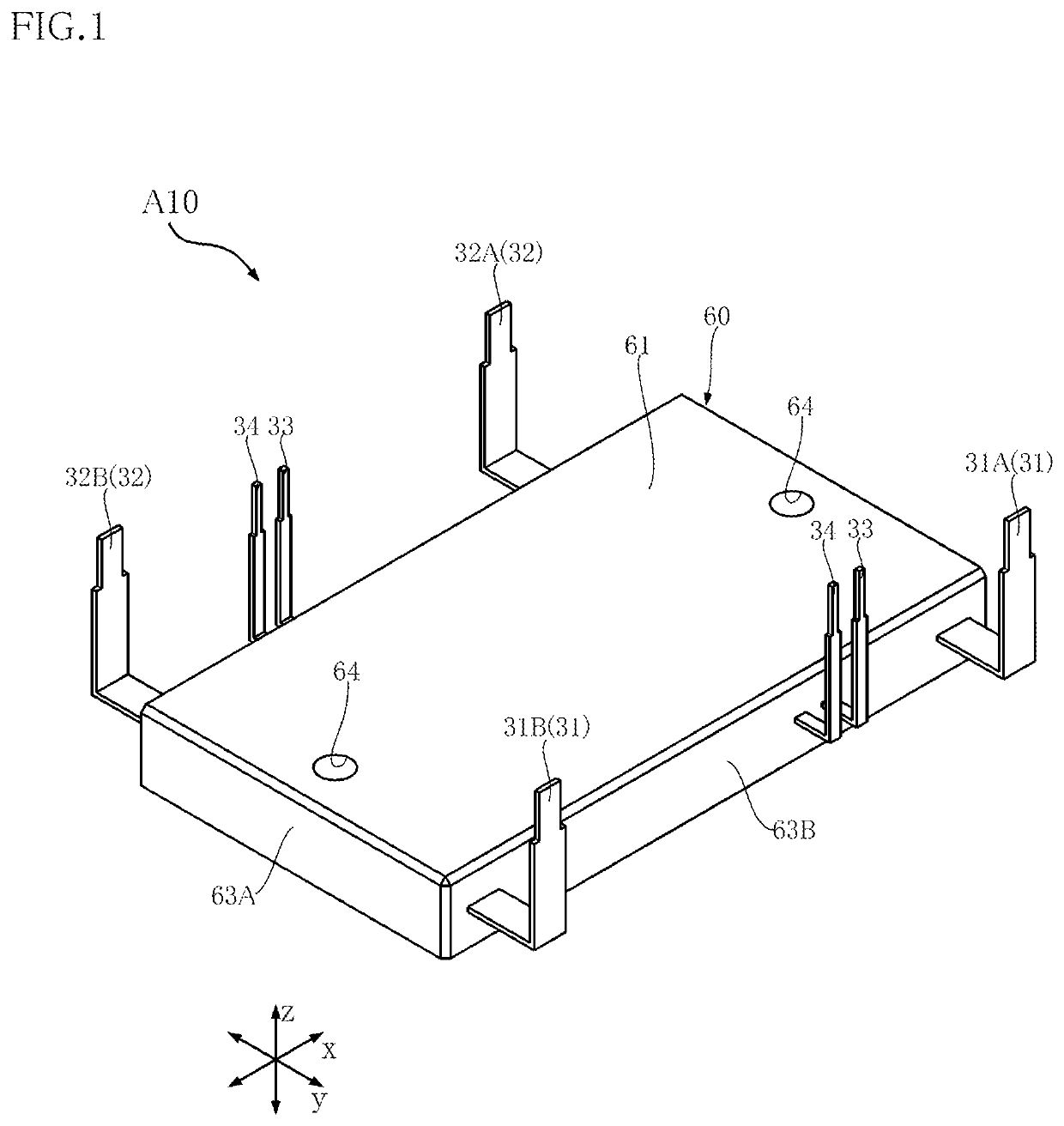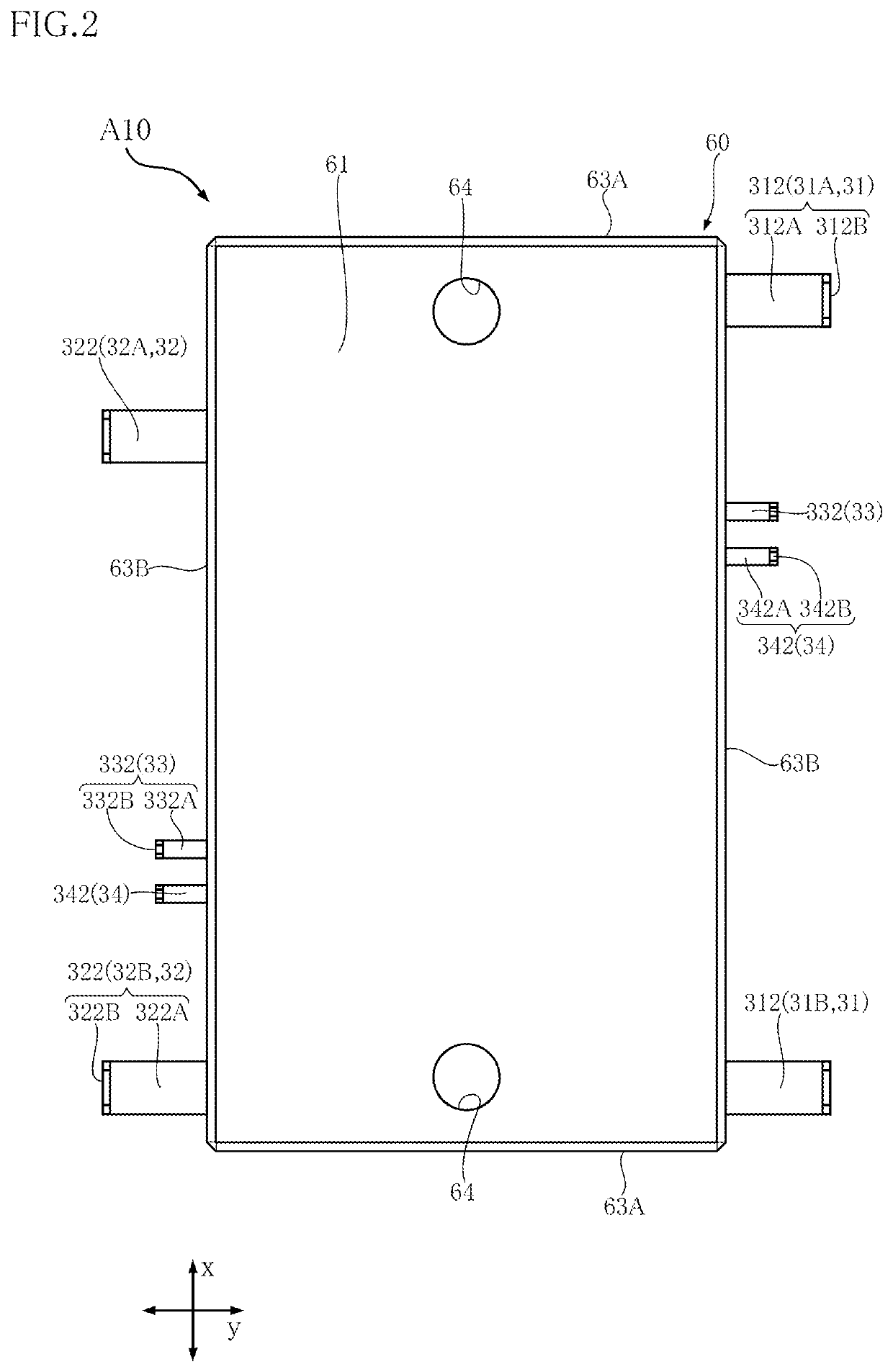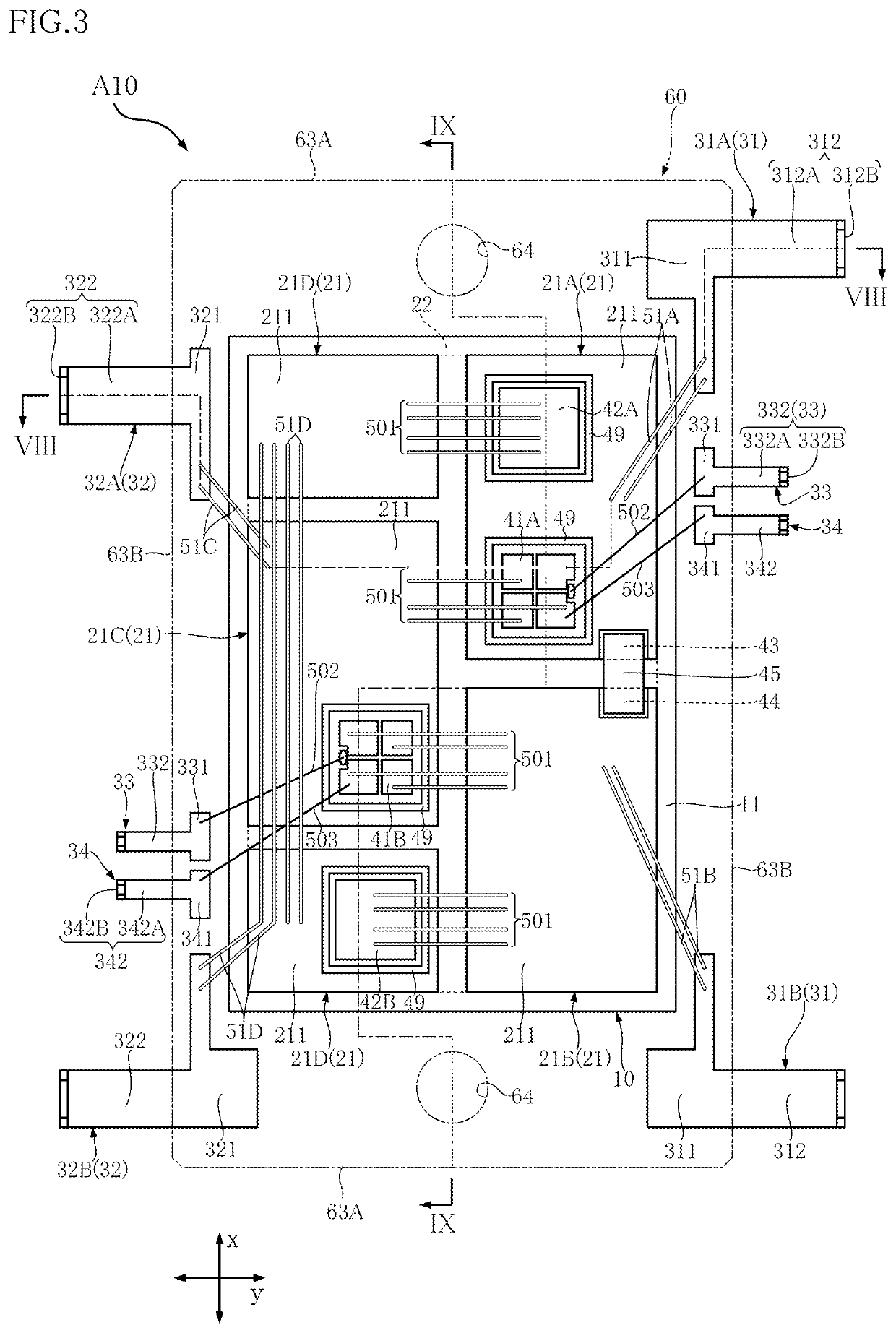Semiconductor device
- Summary
- Abstract
- Description
- Claims
- Application Information
AI Technical Summary
Benefits of technology
Problems solved by technology
Method used
Image
Examples
first embodiment
[0052]A semiconductor device A10 is described below with reference to FIGS. 1-15. The semiconductor device A10 includes a support member 10, a first switching element 41A, a second switching element 41B, a first diode 42A, a second diode 42B, a first passive element 43, a second passive element 44, an electrical conductor 45 and a sealing resin 60 (see FIGS. 3, 8, 9 and 11-13, for example). In addition to these, as shown in FIG. 3 (and FIG. 1), the semiconductor device A10 includes a pair of input terminals 31, a pair of output terminals 32, a pair of gate terminals 33, a pair of detection terminals 34, a plurality of first conduction members 51A, a plurality of second conduction members 51B, a plurality of third conduction members 51C, and a plurality of fourth conduction members 51D. In the semiconductor device A10, DC power is converted into AC power by driving the first switching element 41A and the second switching element 41B. The semiconductor device A10 is used for a drivin...
second embodiment
[0101]A semiconductor device A20 will be described with reference to FIGS. 16 and 17. In these figures, the elements that are identical or similar to those of the semiconductor device A10 are denoted by the same reference signs, and the description is omitted. In FIG. 16, the sealing resin 60 is illustrated as transparent.
[0102]The semiconductor device A20 differs from the semiconductor device A10 in that it includes an electrical insulator 46.
[0103]As shown in FIGS. 16 and 17, the electrical insulator 46 is located between the first passive element 43 and the second passive element 44. The electrical insulator 46 is thermally conductive. The electrical insulator 46 has an insulating body 461 and an adhesive layer 462. The insulating body 461 is a ceramic material containing silicon nitride or aluminum nitride, for example. Thus, the insulating body 461 has a relatively high thermal conductivity. The upper surface of the insulating body 461 is in contact with the electrical conduct...
third embodiment
[0107]A semiconductor device A30 is described with reference to FIGS. 18 and 19. In these figures, the elements that are identical or similar to those of the semiconductor device A10 are denoted by the same reference signs, and the description is omitted. In FIG. 18, the sealing resin 60 is illustrated as transparent.
[0108]The semiconductor device A30 differs from the semiconductor device A10 in configuration of the first passive element 43, the second passive element 44 and the electrical conductor 45.
[0109]As shown in FIGS. 18 and 19, in the semiconductor device A30, the first electrode 431 and the second electrode 432 of the first passive element 43 are spaced apart from each other in the first direction x. The third electrode 441 and the fourth electrode 442 of the second passive element 44 are also spaced apart from each other in the first direction x. As viewed along the thickness direction z, the electrical conductor 45, the second electrode 432 and the third electrode 441 a...
PUM
 Login to View More
Login to View More Abstract
Description
Claims
Application Information
 Login to View More
Login to View More - Generate Ideas
- Intellectual Property
- Life Sciences
- Materials
- Tech Scout
- Unparalleled Data Quality
- Higher Quality Content
- 60% Fewer Hallucinations
Browse by: Latest US Patents, China's latest patents, Technical Efficacy Thesaurus, Application Domain, Technology Topic, Popular Technical Reports.
© 2025 PatSnap. All rights reserved.Legal|Privacy policy|Modern Slavery Act Transparency Statement|Sitemap|About US| Contact US: help@patsnap.com



